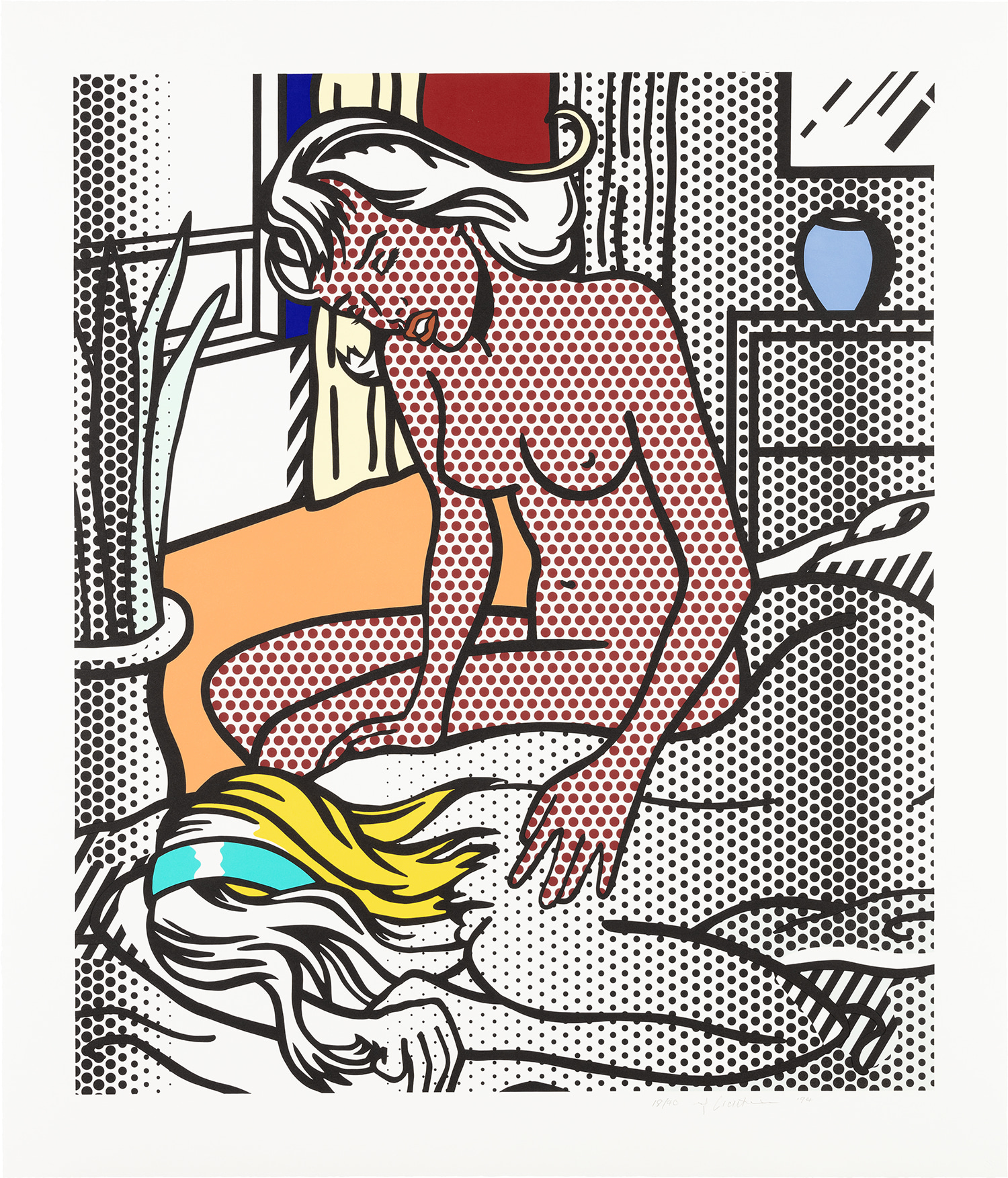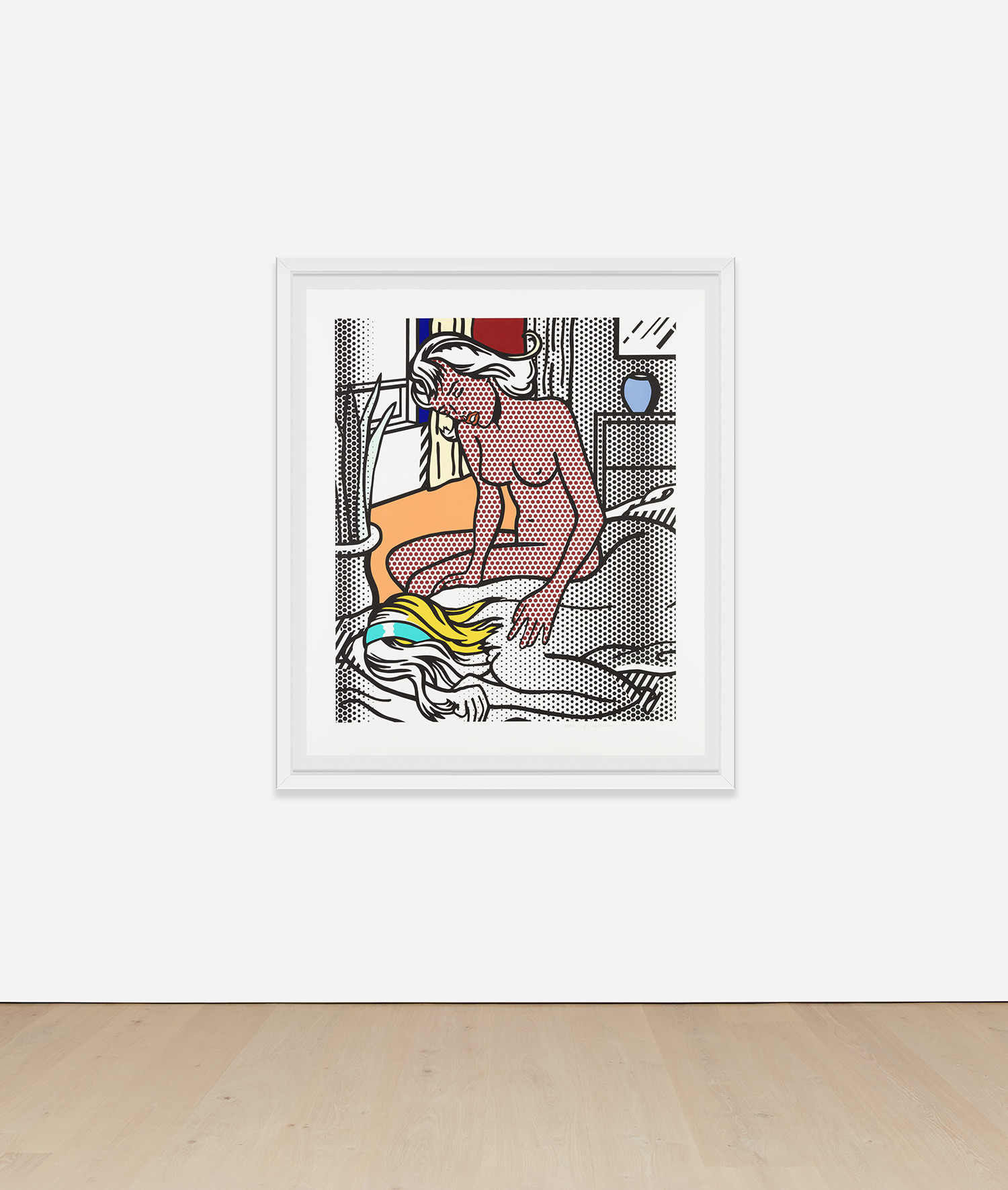



122
Roy Lichtenstein
Two Nudes, from Nudes Series (C. 284)
1994
Relief print in colours, on BFK Rives paper, with full margins.
I. 105.1 x 88.9 cm (41 3/8 x 35 in.)
S. 121.9 x 104.1 cm (48 x 41 in.)
S. 121.9 x 104.1 cm (48 x 41 in.)
Signed, dated and numbered 18/40 in pencil (there were also 12 artist's proofs), published by Tyler Graphics Ltd., Mount Kisco, New York (with their blindstamp), framed.